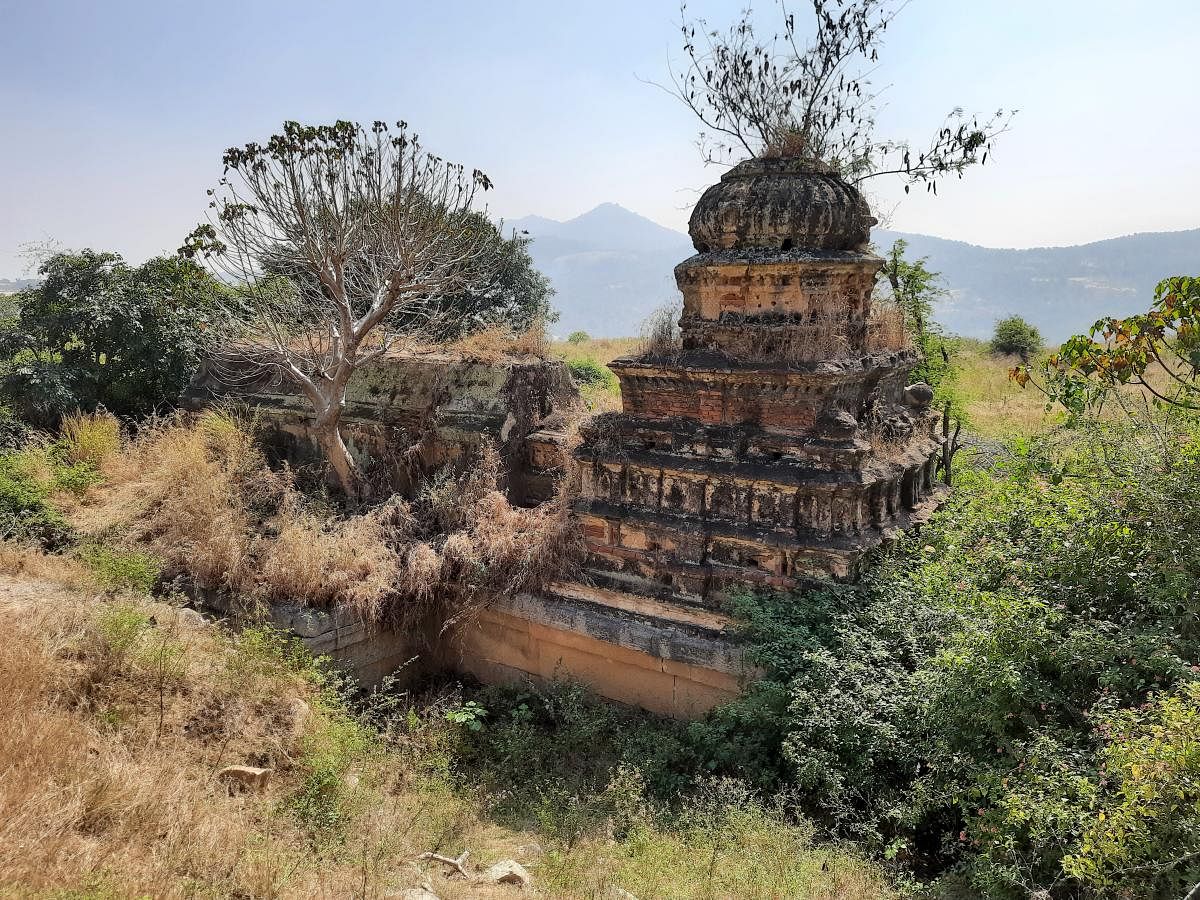

About 180 km from Bengaluru is Nidagal hill in Tumakuru district. The area houses ruins from the 12th and 13th centuries. Nidagal was once ruled by the Gangas, Chalukyas, Cholas, Hoysalas, later it was part of the Vijayanagara kingdom and eventually was ruled by Hyder Ali and Tipu Sultan of Mysore kingdom.
This place was christened Neelanjanagiri, and it was the capital of Nidugal Cholas, who were feudatory to the Kalyani Chalukyas. The Nidugal Cholas ruled parts of Karnataka during the 12th and 13th centuries.
According to inscriptions available on site, King Irungola Deva Chola Maharaja ruled from Nidugal in the mid 12th century.
The fort gained prominence in history during the period of the Vijayanagar dynasty as the local chieftains (Palegars) were vassal to the Vijayanagar kings.
Built using sand, mud and limestone, parts of the fort remain strong, suggesting the skilled masonry available in those times.
All that remains from those prosperous times is a damaged and ruined fort.
The monuments
These ruins house Halegannada inscriptions and Veeragallus (hero stones). Veeragallus commemorate martyred soldiers who lost their lives during wars, installed as tokens of gratitude by the then rulers. One can also witness Sati stones that document the wives of martyred soldiers and rulers jumping into funeral pyres.
For those who want to cast an eye on these dilapidated monuments, the trek to the summit may prove a little difficult as there are no well-formed steps. Along the way is the ruined accommodation for soldiers made of stone and mortar.
Here, one may chance upon a few shattered cannons mounted on bastions. Reportedly, these cannons were brought from Srirangapatna. Hyder Ali had conquered this hill by defeating the local Palegar while on his way to overtake the Chitradurga fort.
The view is spectacular from the hilltop, particularly during monsoons as the thick green shrub forests are covered with dew. Here is a temple dedicated to Rama Lingeshwara, a form of Shiva. According to inscriptions, the linga was brought from Kalahasti. Atop the hill is also a Nandi statue and a fire bowl. Fires are kindled here during Shravanamaasa. On the last Monday of Shravanamaasa, a big fair is usually organised here, popularly known as Basavanna jaathre.
Intervention needed
Recently, a burial site from the Iron Age and remains from iron smelting were found near the fort. This may suggest that evidence exists from the Iron Age, however, there has been no attempt to investigate the site.
The monument has also become subject to public mischief, many treasure hunters also come foraging to the hill.
The area may not survive much longer without adequate support.
The government of Karnataka and the Archaeological Survey of India need to put in more efforts to save these monuments and bring to light more information about the bygone glory of this fort.
The rich history of the region could be included in the school curriculum for young children to study and understand their significance.